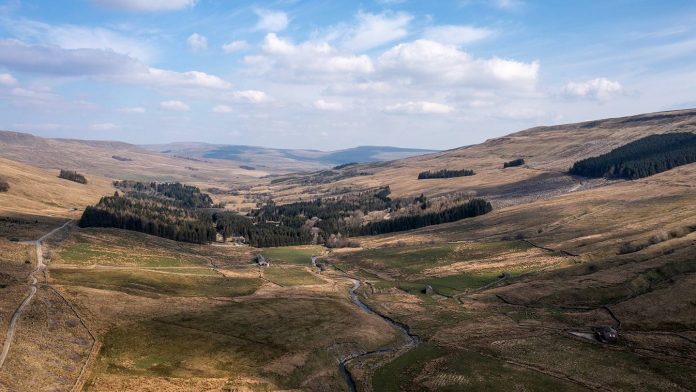A new tree planting project in North Yorkshire aims to plant over 10,000 trees in an area which was once once of the largest areas of native woodlands in England
The Woodland Trust is aiming to plant 291 hectares of a huge site with saplings but it’s faced with one of its most challenging of projects – an unforgiving landscape which witnesses everything our weather has to throw at it, high hillsides and gushing streams alongside delicate ancient habitats such as limestone pavements and peatlands.
It is a project where habitat restoration and nature recovery are as much a part of the plan as planting.
Al Nash, who is spearheading the project for the Woodland Trust, said this weekend – when the first of 100,000 trees will go into the ground in phase one – will be a significant moment for the Woodland Trust.
Mr Nash, a passionate Yorkshireman himself, said:
“I love the Dales but the one thing it lacks in many areas is an abundance of trees! Here we will be giving nature and biodiversity a big boost and creating a vibrant mosaic of habitats and a rare opportunity to create a sizeable wildlife haven for the north of England. Woodland birds will have a home here for the first time in centuries, and open scrub woodland should benefit endangered species like the black grouse. It’s clearly a wonderful opportunity to create something tangible in the Yorkshire Dales for the fight against climate change. The work we do here will restore an entire ecosystem, lock away carbon for years to come, and help improve water quality and mitigate flooding in the area.”
Many centuries ago, this ancient glacial valley would have been blessed with swathes of woodland stretching across the landscape but now the 561 hectares (1387 acres) site is almost devoid of trees.
It’s a stark situation repeated across the Yorkshire Dales National Park, where total tree cover is less than 5% and ancient woodlands only make up 1% of that cover.
The Woodland Trust is determined to change this. Thanks to a successful public campaign it raised the funds to buy the site, which includes helping to protect a significant red squirrel population, providing much-needed habitat for this threatened native species.
Snaizeholme really will be a unique and complex piece of conservation work due to the range of habitats and species, the topography and elevation – not to mention the estimated 2m of rainfall per year.
Tree planting will exist alongside huge restoration projects, including 113 hectares (279 acres) of blanket bog / deep peat, approximately 100 ha (247 acres) of limestone pavement and over 77.4 hectares (191 acres) of open valley bottom following Snaizeholme Beck.
The Trust is planning to plant almost 291 hectares (719 acres) with native tree saplings. The careful approach to planting will see different densities of trees planted across the site to create groves, glades and open woodlands that gently transition into and connect with the other habitats, all delivered without the use plastic tree guards or herbicides. Due to the complexities, the number of trees that will go into the ground will be determined as the project progresses and the Trust will work closely with the University of Leeds and the University of York.
Guy Thompson, director of the White Rose Forest said:
“We are delighted to see tree planting underway at Snaizeholme. This truly outstanding project will not only bring numerous benefits to the Dales and its communities but also demonstrates the continued commitment of the White Rose Forest to deliver landscape scale projects for natural flood management and nature recovery in Yorkshire.”







